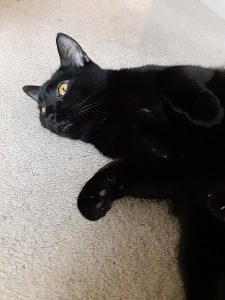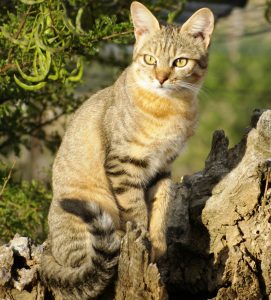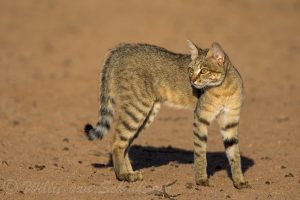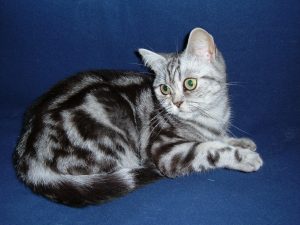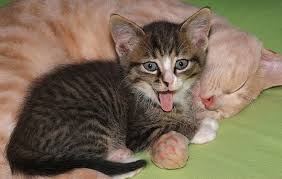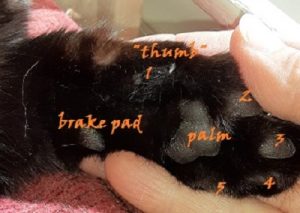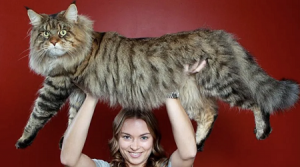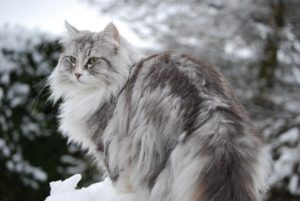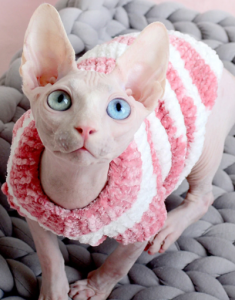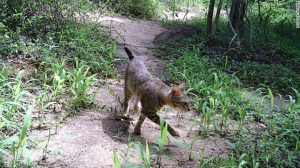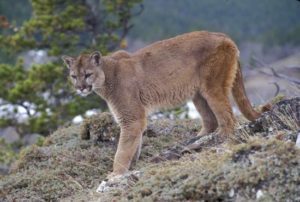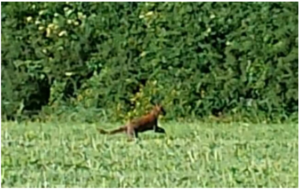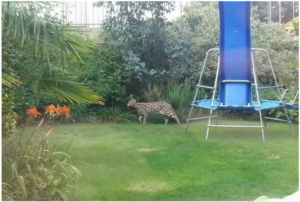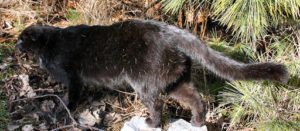Podcast: Play in new window | Download (Duration: 20:51 — 23.9MB)
This week is Caitie Sith and Dave’s episode! They want to learn about animals reintroduced to Scotland, especially the Highland wildcat!
The Scottish (or Highland) wildcat:

The Eurasian lynx:
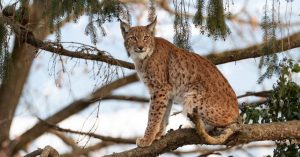
The Eurasian beaver (with babies!):
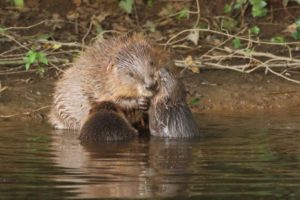
The white-tailed eagle:
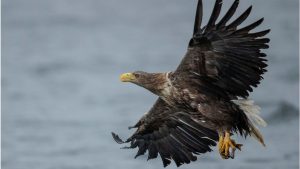
Reindeer in Scotland:
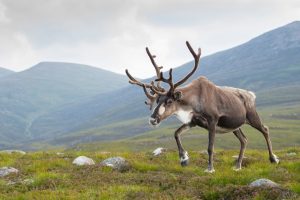
The pine marten:
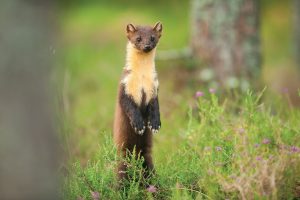
Show transcript:
Welcome to Strange Animals Podcast. I’m your host, Kate Shaw.
This week is Caitie Sith and Dave’s episode, where we’ll learn about the re-wilding of Scotland! Re-wilding is the process of restoring an ecosystem to its natural state, basically reversing habitat loss. Most of the time there’s a lot more to it than just reintroducing native animals, but sometimes that’s all that’s required.
Scotland is a part of the island of Great Britain, north of England. People have lived there since the last glaciers melted at the end of the Pleistocene, around 12,000 years ago. During the Pleistocene and a few thousand years after the glaciers melted, Scotland was connected to Europe by a lot of marshy land where today there’s ocean, and naturally many animals lived in Scotland that were also found in Europe at the time. Some of the ice age megafauna that lived in Scotland included the woolly rhinoceros, woolly mammoth, bison, aurochs, wild boar, saiga antelope, giant deer, red deer, reindeer, moose, wild horse, beaver, walrus, Polar bear, brown bear, lynx, wolf, Arctic fox, and cave lion. Many fossil and subfossil remains of Pleistocene animals were destroyed by the formation and movement of thick glacier ice, which scoured the land down to bedrock in many places, so those are only the animals we know for sure lived in Scotland.
But Scotland wasn’t covered by glaciers all the time. The Pleistocene wasn’t a single ice age but a series of cold events interspersed with warming trends. During these interglacial periods, which lasted some 10- to 15,000 years at a time, animals would move to Scotland from other places or become more numerous than before. Then the climate would start cooling again, glaciers would slowly form over many years, and animals would move to areas where there was more food. This happened repeatedly over a period of more than 2.5 million years.
In other words, while we have some fossils of Pleistocene animals that once lived in Scotland, we don’t have nearly as many as have been found in England, Ireland, and Wales. But what we do know is that Scotland was once teeming with all kinds of animals we’d never associate with the country today, like cave lions and Polar bears!
Much of the ice age megafauna went extinct around 12,000 years ago when the last glaciers melted and the climate started warming. Cold-adapted animals couldn’t always survive in a warmer climate, not to mention that as the climate changed, the types of plants available to eat changed too. Some animals migrated away or went extinct, while some were able to stay in Scotland successfully. This included the red deer, reindeer, wild boar, walrus, brown bear, and lynx.
If you’re wondering why that list is full of animals that don’t actually live in Scotland these days, like the brown bear and lynx, it’s because humans hunted many of the native Scottish animals to extinction. Others went extinct due to habitat loss or competition with introduced animals. Many surviving species are endangered today for the same reasons.
For example, the Scottish wildcat, also called the Highland wildcat. We talked about it briefly in episode 52 way back in early 2018. One of the animals that migrated to Scotland after the Pleistocene, but before sea levels rose and cut the British Isles off from Europe, was the European wildcat. The Scottish population has been separated from the European population for at least 7,000 years, and some researchers think it should be classified as a subspecies of European wildcat.
The Scottish wildcat is a little larger than a domestic cat and is always tabby striped. It has a bushy tail with a black tip, a striped face and legs, never any white markings, and is usually dark in color with black paws. It’s a solitary animal that mostly lives in woodlands, where it eats mice, voles, and other rodents, rabbits, and birds. It used to be common throughout much of the British Isles, but these days it’s only found in parts of Scotland.
You’d think people would be excited to have a genuine wildcat living in their country, since wildcats are pretty awesome and eat animals that can damage crops. But for some reason, until recently people thought these wildcats were pests and would shoot them on sight. Some people thought the wildcats were killing game birds, which is rare, or that they were dangerous, which isn’t true. At the same time, the people shooting wildcats were letting their domestic cats roam freely, which has caused an even bigger problem to wildcats than getting shot at.
Like other wildcat species, the Scottish wildcat can and will cross-breed with domestic cats. The resulting kittens are fertile, meaning they can have babies with either wildcats or domestic cats. Kittens are great, of course, but domestic cats are a different species from wildcats. Hybrid cats are less suited to live in the wild, but too wild to be good pets, and if too many domestic cats breed with wildcats, soon there won’t be any real wildcats left. Not only that, domestic cats carry diseases that wildcats can catch.
The Scottish wildcat is a protected species these days, with conservation efforts in place to keep the wildcats and their habitat as safe as possible. One important step is to encourage people to get their domestic cats neutered. This is healthier for pet cats anyway and will help keep tomcats from spraying and fighting, and of course it stops them from having kittens with wildcats.
Another felid that once lived in Scotland is the Eurasian lynx. It still lives in parts of Asia and Europe, but it went extinct in Scotland several hundred years ago, mainly due to deforestation and hunting for its fur. It’s about 28 inches tall at the shoulder, or 70 cm, and is a heavily built animal with thick spotted fur and a short bobtail. The tip of its tail is black although the rest of the animal is mostly tan or brown with darker brown spots, and it has long black tufts of fur on the tips of its ears. It’s slightly bigger than the related Canadian lynx.
Conservationists have wanted to reintroduce the Eurasian lynx to Scotland for years. Since the lynx is threatened in the rest of its range by habitat loss and hunting, reintroducing it to its former range in Scotland would help it and the ecosystem in general. With no large predators to keep their numbers in check, the population of roe deer in Scotland is too high to be healthy, and the lynx loves to eat roe deer.
Some people worry that if the lynx is reintroduced to Scotland, it will be dangerous to humans and livestock. But the lynx is a shy, solitary animal that avoids humans as much as possible. There are enough roe deer alone to sustain a population of over 400 lynxes in the wilder parts of Scotland, especially in the Highlands. The lynx also spends almost all of its time in forests and doesn’t like open pastures. It’s been successfully reintroduced to its former range in other countries, with a nice side effect being increased tourism to national parks where it’s now found.
Scotland also used to have beavers, which were hunted to extinction in the 16th or 17th century. Then, in 2009, the Eurasian beaver was reintroduced to parts of Scotland and is doing great! There are more than 1,000 beavers living in Scotland now. Beavers are considered a keystone species, a term we haven’t really examined on the podcast before, but it means that an animal is so important to an ecosystem that if it goes extinct in an area, the ecosystem sort of falls apart and many other animals go locally extinct soon after.
Beaver ponds create a winter habitat for many types of fish, and beaver dams don’t stop fish like salmon that migrate upriver to spawn. The dams help reduce flooding, improve water quality, and create cover for lots of fish and other animals.
Naturally, though, some people complain about the beavers, because there will always be someone who complains about anything. Some people think beavers eat fish and will eat up all the fish that humans want to catch. Beavers actually don’t eat fish at all, they only eat plant material. Some people think beavers carry the giardia parasite, which causes a bacterial infection sometimes called beaver fever that’s spread in water, but giardia is actually mostly spread by domestic dogs. Some people complain that beavers fell trees and build ponds, and both these things are true. But the beaver is just doing what it’s supposed to do, and as we just learned, this tree felling and pond-making are good for the environment—unlike humans, who chop down lots of trees and make artificial ponds when landscaping, while simultaneously draining wetlands, which doesn’t help the local environment at all. Besides, the beavers are cute and attract tourists who want to get pictures of them, which is also good for the local economy. Everybody wins when there are beavers around, is what I’m trying to say.
The beavers reintroduced in 2009 aren’t the only beavers in Scotland. In 2001, people started seeing them around the river Tay—but no one knew where they came from. Well, presumably someone knew, because the beavers didn’t get there without help. If this reminds you of episode 48, where we talked about some mystery beavers that appeared in Devon, England, the Devon beavers showed up in 2013, twelve years after the Scottish mystery beavers. At first the Scottish government planned to capture the Tayside beavers and keep them in captivity, but the beavers are still there and doing very well.
It’s great that over a thousand beavers live in Scotland now, but that’s actually not very many. Still, it’s a whole lot better than the number of Eurasian beavers about 150 years ago, when researchers think there may have been as few as 300 individuals alive in the whole world.
Another animal that once lived in Scotland, was hunted to extinction, and then mysteriously reappeared recently is the wild boar. They first appeared in the 1990s and by now there are thousands of them in Scotland. It’s possible they escaped from farms, where they’re sometimes raised for meat like domestic pigs. While they’re a native species, they don’t have any predators in Scotland and are causing a lot of damage as they become more numerous. The wild boar’s natural predator is the wolf, and the last wolf in Scotland was killed in 1743. Lynxes will also kill wild boar piglets.
Some birds have been reintroduced to Scotland too. The white-tailed eagle is a type of sea eagle, closely related to the bald eagle of North America although it’s slightly larger than the bald eagle. The biggest ever reliably measured was a specimen from Greenland with a wingspan of 8 feet 4 inches across, or 2.53 meters, just a smidge larger than the largest bald eagle wingspan known. It’s mostly brown and gray with a yellow bill and feet, and a white tail. It lives around water and eats a lot of fish, but it also eats lots of carrion, gulls and other birds, and occasionally small mammals like rabbits. It always lives near water but it prefers wooded areas, especially lowlands and forested islands.
The white-tailed eagle went extinct throughout Britain in the early 20th century when people decided they wanted all those fish the eagle eats for themselves. Never mind that even a thousand eagles couldn’t eat as many fish that a single commercial fishing boat catches in a day. People also decided that eagles killed lambs, even though this is extremely rare. White-tailed eagles would much rather eat fish and seagulls than lamb. The last white-tailed eagles in Scotland were shot and killed in 1916.
As if that wasn’t bad enough, white-tailed eagles were also killed throughout the rest of their range and were especially vulnerable to the chemical called DDT. DDT was a popular pesticide developed in the 1950s and used to kill insects on crops and gardens. But DDT is dangerous, because like other pesticides it doesn’t just do its job and evaporate. It stays in the environment and ends up in the bodies of animals, including people. It’s especially bad for birds that eat a lot of fish, since a lot of pesticides end up in the water, and it causes their eggshells to become so thin and weak that the eggs break when the mother tries to keep them warm. This is the same thing that almost drove the bald eagle to extinction in North America. By the time DDT use was banned in many countries and the white-tailed eagle was declared a protected species, it was almost too late.
Conservation efforts have helped stop the white-tailed eagle from going extinct and its numbers are slowly growing. Starting in 1975, young eagles were brought from Norway to Scotland, where they were successfully reintroduced in the inner Hebrides islands and have now expanded to other parts of Scotland. Some people still complain about the eagles and sometimes shoot or poison them even though it’s illegal, but most people are happy to have them around, especially birdwatchers.
Scotland even has some reindeer these days. Reindeer probably lived in Scotland until around the 12th century, and in 1952 a Swiss herdsman thought they should still be there. He brought a small herd to the Cairngorm mountains, which is now a national park. The reindeer are semi-domesticated but roam free, and they attract tourists who hope to catch a glimpse of them.
At the same time that many native animals have gone extinct, lots of non-native animals have been introduced to Scotland, including wallabies, American mink, gray squirrels, various species of crayfish, and many more. Conservationists are working to minimize the damage these introduced species cause. Many invasive species were animals kept as pets that either escaped or were released into the wild. We talked about the invasive eastern gray squirrel versus the native red squirrel in episode 241, for instance. People released gray squirrels into parks in England because they were so cute, and a hundred years later, the gray squirrels are taking over in many places. They’re increasingly common in Scotland, although Scotland has a small predator called the pine marten that loves to eat squirrels.
The pine marten is a type of mustelid, or weasel relative, that’s common throughout much of Europe and Asia. It grows about two and a half feet long, or 75 cm, including its bushy tail. It mostly lives in wooded areas and spends a lot of its time in trees, hunting squirrels and other small animals like frogs, insects, and birds. It will also eat carrion, bird eggs, and sometimes fruit. It’s mostly brown with a cream-colored throat. It even has partially retractable claws like a cat to help it climb trees, although it’s not related to the cat.
The pine marten is especially good at catching squirrels, and it tends to target the gray squirrel because it’s easier to catch. The red squirrel is more cautious. Where there are pine martens, there are fewer or no gray squirrels. The problem is, the pine marten is considered a pest that kills game birds, so some people shoot or poison it even though it’s a protected species. Then those same people complain about all the gray squirrels around. The pine marten is doing well in many parts of Scotland, though, and has even expanded its range slightly in the last few years.
Scotland is a beautiful country known for its wild and rugged countryside. It wouldn’t take much to rewild it properly, a process that’s well underway with keystone species like beavers already re-established in many places. The main problem is people who don’t understand that a healthy ecosystem requires predators. Without lynxes, wolves, bears, and other large predators, animals like roe deer and wild boar become so numerous that they can’t find enough to eat and either starve or destroy crops and gardens.
Fortunately, many more people in Scotland do understand the importance of building healthy ecosystems. After all, they’re naturally proud of where they live and want to make it even better.
You can find Strange Animals Podcast at strangeanimalspodcast.blubrry.net. That’s blueberry without any E’s. If you have questions, comments, or suggestions for future episodes, email us at strangeanimalspodcast@gmail.com. If you like the podcast and want to help us out, leave us a rating and review on Apple Podcasts or Podchaser, or just tell a friend. We also have a Patreon at patreon.com/strangeanimalspodcast if you’d like to support us for as little as one dollar a month and get monthly bonus episodes.
Thanks for listening!

